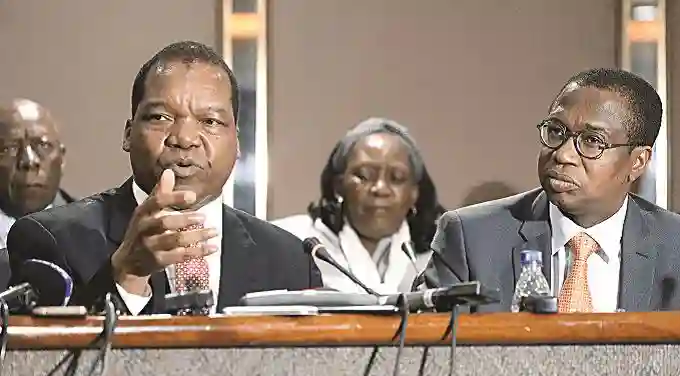Reserve Bank of Zimbabwe (RBZ) governor John Mangudya (JM) has said foreign currency auction systems are funded through exports. He made the remarks while speaking to The Zimbabwe Independent (ZI) in an interview that was preceded by Mangudya’s Mid-term Monetary Policy statement (MPS) presented three weeks ago. The interview was held last week. Below are excerpts of the discussion:
ZI: We have seen backlogs at the foreign currency auction system. We have seen figures of US$200 million-plus being thrown in the market in terms of the backlog. But what is worrisome is that the allocated amounts are rising to US$40 million, to US$45 million per week
JM: How do you fund auctions? You fund auctions through export receipts. We know the export trends of companies here. For instance, platinum companies bring foreign currency once a month. So because foreign currency comes once a month from those, say platinum companies, which are the largest contributors to the auction, by the way, it means when you have got a backlog of three or four weeks you know that the money is going to come anyway. That’s what is called cash flow management.
ZI: Tell us governor, how do global trends affect our monetary policy in Zimbabwe?
JM: The global and domestic environment affects our monetary policy and also fiscal policy. We are affected by these two. On the global landscape factors, we are looking at a 6% rebound in the global economy. That is a positive for our country. The IMF (International Monetary Fund) will be releasing US$650 billion in SDR (special drawing rights) into the global economy on the 23rd next week (Monday this week). So that increases the reserve money in the global economy and it will drive commodity prices.
ZI: How are these linked?
JM: These ones are linked. When you put money in the economy, prices go up because prices have absorptive capacity. You want to stabilise and you absorb the money you have put into the economy. The stimulus package in the developed countries is stimulating demand in the world economy. That is why it (global gross domestic product) is going up by 6%. Also, as a result, the prices will obviously need to go up because price is used as an instrument to absorb the money. Therefore, when you put money into the global economy, prices go up. Without money, you do not grow and that is the context of the global. That growth context which is there is also mirrored in the Zimbabwe macroeconomic situation.
ZI: Please explain how the global growth has been mirrored in the Zimbabwean economy?
JM: If you look at our three sectors of the economy, the external sector increased by 29,1% (foreign currency receipts) during the first half of this year. We are looking at the foreign exchange system, which has been able to discharge or provide US$1,7 billion of funds through the formal system, which is quite a lot because that is about 40% of the requirements by the productive sectors of the economy. The other side is that companies also use funds in foreign currency accounts. There is also the interbank. So the interbank market plus the foreign currency auction system, plus the foreign currency utilisation in the FCA (foreign currency accounts) gives you the 100%. We have seen improved diaspora remittances and exports receipts in this country. We have also had a sustained current account surplus because of improvement in remittances.
ZI: Are these the factors that were under consideration when GDP growth targets were revised to 7,8% last month?
JM: So the external sector is bright, it is good. On the real sector, we have now increased the growth projections from 7,4% to 7,8 % on account of what we have been seeing on the ground. Agriculture (growth) is expected to be about 34%. We have seen growth in industry as more foreign currency was made available to the economy. Through results that are being presented by companies, entities are giving a testimony to economic growth. So, the economy is recovering and we are witnessing growth. We are on the road to achieve 7,8% economic growth.
More: Zimbabwe Independent

